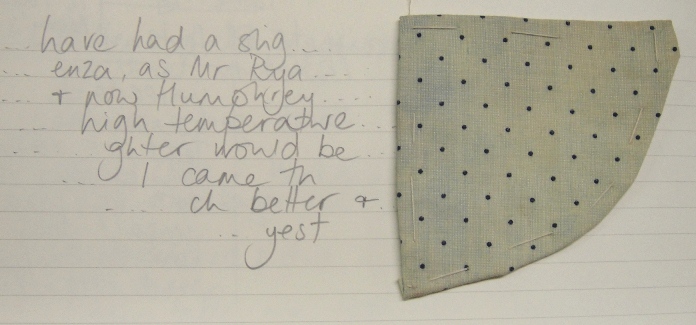Fragments and snippets
From now on, I intend to spend every Tuesday at Platt Hall, exploring different aspects of the collection. This is what I looked at this week.
I am fascinated by these patchwork pieces, by the snippets of letters and notes that are tucked away under the fabric. Am currently thinking about the relationship between the Mary Greg Collection of objects and, what is really the Mary Greg Collection of letters that sits alongside. Is it too sweeping to say that in museums and galleries, the objects are what counts and the archive material that documents their acquisition is secondary, often ignored?
But Mary’s letters give the collection a whole new dimension, lifting it from being bits of stuff in the museum, to something that is only here because someone once thought about it, discussed it, shaped and imagined it and valued it sufficiently to want to share it. And recorded her thinking through the letters. Mary’s voice, her motivation, reasoning, opinion and emotion, come through so strongly, because of the extraordinary correspondence she maintained with curators. It’s a hugely evocative reminder that stuff is only here because individual people once put it here.
These humble little patchwork pieces are somehow both object and text, hinting at other aspects of life (I do hope Humphrey made a quick recovery). Random bits of writing that preserve moments of life otherwise lost (oh dear, in danger of getting a bit purple). It also hints at a time before email when people wrote and received letters, presumably accruing vast amounts of paper, not all of which needed to be kept, and was therefore put to other useful purposes. Many more thoughts on this, but have to go to a lecture now, so will think on.
















Comments